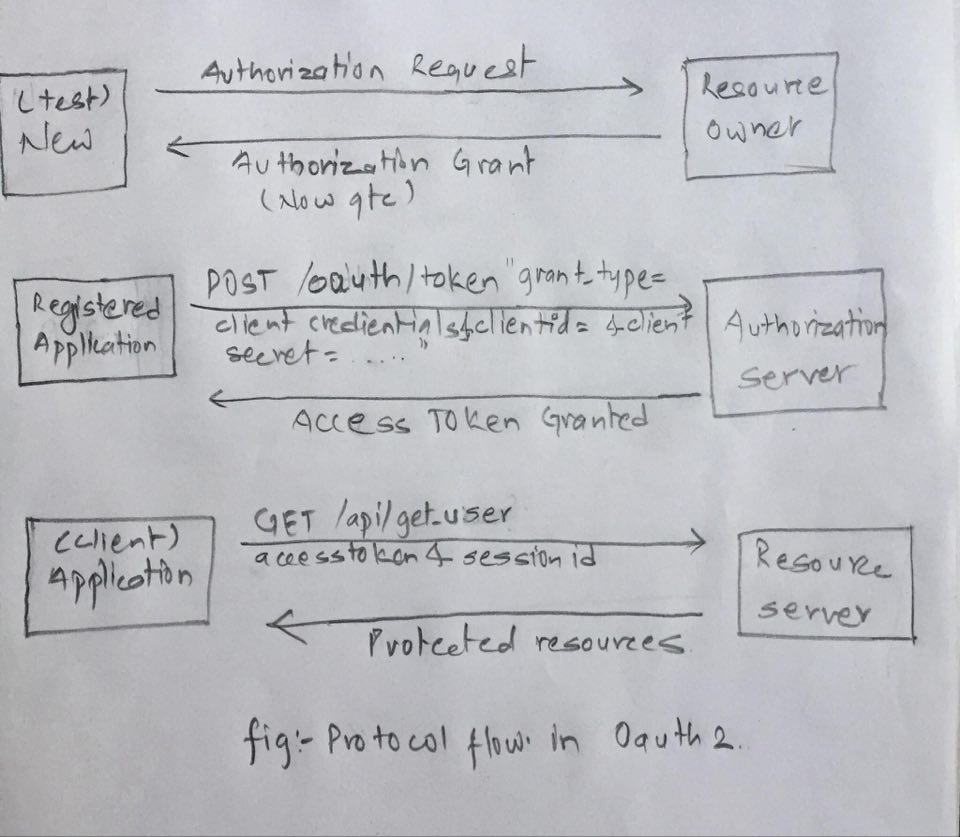OAuth 2

Here I will explain detail about the OAuth 2 .
Introduction
OAuth 2 is an authorization framework that enables applications to obtain limited access to user accounts on HTTP Service like Google, Facebook, GitHub etc. In other sense, it is a protocol that allow a user to grant the access to their resources on one site, to another site without having to expose their credentials.
Let’s dive deep into OAuth 2 with the actual work flow involved in it. Basically there are four roles involved in it.
OAuth 2 Roles:-
- Resource Owner
- Client
- Resource Server
- Authorization Server
Resource Owner: User
An entity capable of granting the access to the protected resources. It is actually a user who authorize the access to their application. Typically this is an end-user.
Client: Application
An client is the application which wants to access the user’s account. To access the protected account it must be authorized by user and authorization must be valid with the Authorization server i.e API .
Resource/Authorization Server: API
Resource Server is hosting the protected resources of certain user where as Authorization Server verify the identity of user and providing the access_token to the application for authorization.
Workflow of OAuth 2
+--------+ +---------------+
| |--(1)- Authorization Request ->| Resource |
| | | Owner |
| |<-(2)-- Authorization Grant ---| |
| | +---------------+
| |
| | +---------------+
| |--(3)-- Authorization Grant -->| Authorization |
| Client | | Server |
| |<-(4)----- Access Token -------| |
| | +---------------+
| |
| | +---------------+
| |--(5)----- Access Token ------>| Resource |
| | | Server |
| |<-(6)--- Protected Resource ---| |
+--------+ +---------------+
Let’s take an example to explain the real work flow involved in OAuth 2.
-
Authorization Request
I have taken a new user ’test’ and request the resource owner qtc user. -
Authorization Grant
By exploiting the contact form user test will grant authorization by user qtc using the code. -
Authorization Grant
Now I am into user qtc and requesting access-token presenting an authorization grant to the authorization server. -
Access Token
Authorization server authenticates the client(application) that I have used and validates the authorization grant, and if valid , issues an access token that to user which will be invalid after 600 sec. -
Access Token
Now client (application) request the protected resources using above access_token and will be authenticated by server. -
Protected Resources
After verifying the access_token and sessionid of that user Resource server will provide the protected resources.
Firstly, let’s talk about the basic topic involved in OAuth 2.
Authorization Grant
Authorization grant is a credentials representing the resource owner’s authorization used by the client to obtain an access token. There are four types of grant:- implicit, authorization code, resource owner password credentials and client credentials.
Authorization Code
The authorization code is obtained by using an authorization server as an intermediary between the client and resource owner. Instead of requesting authorization directly from the resource owner, the client directs the resource owner to an authorization server which in turn directs the resource owner back to the client with the authorization code.
Client Credentials
Client credentials can be used as authorization grant when authorization scope is limited to the protected resources under the control of the client. It is used as authorization grant typically when the client is acting on its own behalf(the client is the resource owner) or requesting to access the protected resources.
Access token
Access token are the credentials with the combination of strings used to access protected resources.
Client Registration
Before initiating the protocol, the client registers with the authorization server. The means through which the client registers with the authorization server are beyond the scope of this specification but typically involve end-user interaction with an HTML registration form. When supported by the authorization server, registration can rely on other means for establishing trust and obtaining the required client properties (e.g., redirection URI, client type).
-
Client Type
Basically there are two client type based on their ability to authenticate securely with authorization with authorization server.- Confidential Type
- Here application is capable of maintaining the confidentiality of their credentials or capable of secure client authentication using other means.
- Public Type
- Here application is incapable of maintaining the confidentiality of their credentials or incapable of secure client authentication using any other means.
- Confidential Type
-
Redirection URI
It redirects the user-agent of service after an authorization code is granted. For e.g I used my local server to see the response from the request I send in a certain field like contact form(vulnerable field) and finally got the sessionid.
Below you can see the real work flow involve in Oauth2 and it’s really Oouch…
